How to Self-Study Basic High School Mathematics
Estimated Read Time: 7 minute(s)
Common Topics: book, geometry, amazon, algebra, basic
Click For Complete Series
Table of Contents
Introduction
We often get questions here from people self-studying mathematics. One of those questions is what mathematics should I study and in what order. So to answer those questions, I have decided to make a list of topics a mathematician should ideally know and what prerequisites the topics have.
Basic stuff
Of course, we have the basic (high school) stuff. This includes
- Basic algebra
This is the art of solving equations and applying mathematics knowledge to some real-world situations.
Prerequisites: Being able to count well
Important topics:
a) Different number systems: naturals, integers, rationals, reals, and complex numbers.
b) Basic rules for manipulating numbers (such as fractions).
c) Solutions of equations of the first degree and second degree.
d) Solutions of systems of linear equations.
e) Manipulating powers and roots and solving equations involving powers and roots
f) Solutions to inequalities
g) Functions, mappings and their graphs
h) Logarithms, rules of manipulation of logarithms and equations involving logarithms
i) Various methods of solving (special) polynomial equations such as substitution and the rational root theorem
j) Basic logic and proofs - Basic geometry
Geometry is so important in mathematics. Needless to say it is important to know it well. Personally, the best approach is to start with “synthetic geometry”, where some axioms are provided and some basic theorems are worked out. But after a while, things will get more algebraic. Prerequisites: Algebra
Important topics:
a) Axioms for points, lines, and planes. Notions of circles, polygons, parallelism, …
b) Notions of congruence
c) Theorems for triangles including the Pythagorean theorem (and converse!), how to tell triangles are congruent, special points in triangles such as the incenter, …
d) Theorems for polygons and circles (for example the tangent line to a circle is perpendicular to the radius)
f) Area and length of geometric figures
g) Special transformations such as projection, rotation, etc.
h) Coordinates and vectors
i) Representing lines, planes, circles, parabolas, etc. by equations
j) Conic sections
k) Dot product and the related algebra - Trigonometry
Trigonometry introduces some special functions such as the sine, cosine, and tangent functions. This helps the study of triangles and can be used to solve some amazing real-world problems. Prerequisites: Basic algebra and Basic Geometry
Important topics:
a) Oriented angles and radians
b) Sine, cosine, and tangent function, their visualization in the circle, and their graphs
c) Solving triangle problems with the sine, cosine, and tangent functions, including the sine and cosine rule
d) Different trigonometric identities with the sine, cosine, and tangent functions: such as the product-to-sum formula’s
e) Inverse trigonometric functions: arcsine, arccosine, and arctangent.
My book recommendations for basic stuff:
If you’re new to abstract mathematics of high school, then there is no better place to begin than:
Algebra by Gelfand, Shen
People who are somewhat mathematically advanced will surely recognize the name “Gelfand”. He is a top mathematician, and this is shown in this book. The book is brilliant throughout. It doesn’t only cover what mathematics is, but also why mathematics is true. For example, did you ever wonder why a negative number times a negative number is a positive number? This book explains all this and more in detail. The book explains “basic algebra” in detail. It has many worked exercises, and many exercises without a solution. Nevertheless, it may be that you will find this book to have too few exercises (after all, the key to understanding math is exercises). Don’t worry though, there are many books that contain a lot of algebra problems and nothing else. Whether you choose Gelfand or some other book, such an exercise book would be a handy investment.
The topics covered in Gelfand are:
- Basics of addition and multiplication
- Negative numbers and fractions
- Powers, roots
- Special formulas such as for $(a+b)^2$ (and more general)
- Polynomials: factoring, roots, division, interpolation
- Arithmetic and geometric progressions
- Quadratic equations, biquadratic equations, symmetric equations
- Inequalities
- Arithmetic, geometric, and harmonic means
This book should be ideal for people new to algebra, or people who find that they remember very little of their algebra classes. Nevertheless, this book should also be a joy to read for people comfortable with algebra already.
After algebra, it might be a good time to do some geometry. For this, I recommend:
Geometry I and II by Kiselev
If you do not remember much of your geometry classes (or never had such a class), then you can hardly do better than Kiselev’s geometry books. This two-volume work covers a lot of synthetic (= little algebra is used) geometry. The first volume is all about plane geometry, the second volume is all about spatial geometry. The book even has a brief introduction to vectors and non-Euclidean geometry.
The first book covers:
- Straight lines
- Circles
- Similarity
- Regular polygons and circumference
- Areas
The second book covers:
- Lines and Planes
- Polyhedra
- Round Solids
- Vectors and Foundations
This book should be good for people who have never had a geometry class, or people who wish to revisit it. This book does not cover analytic geometry (such as equations of lines and circles).
After geometry, it would be good to do some trigonometry, for this:
Trigonometry by Gelfand and Saul
Again a book by Gelfand, and again it is brilliant. It does trigonometry the way it should be done. Again, Gelfand is interested not only in the what and how, but also in the why. You can find many gems in this book that can not be found in any other book. Sadly, this book does not have many exercises, so try to supplement it with an exercise book.
The book covers:
- Trigonometric ratios in the triangle
- Relations among trigonometric ratios
- Relationships in the triangle
- Angles and rotations
- Radian Measure
- The addition formulas
- Trigonometric identities
- Graphs of trigonometric functions
- Inverse functions and trigonometric equations
This book should be ideal for people learning trigonometry for the first time, or people in need of a refresher.
So far, you have seen synthetic geometry, but analytic geometry is very important too. For this, I recommend:
Geometry by Lang, Murrow
Lang is another very famous mathematician, and this is shown in his book. The book covers a lot of what Kiselev covers, but with another point of view: namely the point of view of coordinates and algebra. While you can read this book when you’re new to geometry, I do not recommend it. If you’re already familiar with some Euclidean geometry (and algebra and trigonometry), then this book should be very nice.
The book covers:
- Distance and angles
- Coordinates
- Area and the Pythagoras Theorem
- The distance formula
- Polygons
- Congruent triangles
- Dilations and similarities
- Volumes
- Vectors and dot product
- Transformations
- Isometries
This book should be good for people new to analytic geometry or those who need a refresher.
Finally, some topics were not covered in this book but which are worth knowing nevertheless. Additionally, you might want to cover the topics again but this time somewhat more structured. For this reason, I end this list of books with the following excellent books:
Basic Mathematics by Lang
This book covers everything that you need to know about high school mathematics. As such, I highly advise people to read this book before starting on their journey to more advanced mathematics such as calculus. I do not however recommend it as a first exposure to algebra, geometry, or trigonometry. But if you already know the basics, then this book should be ideal.
The book covers:
- Integers, rational numbers, real numbers, complex numbers
- Linear equations
- Logic and mathematical expressions
- Distance and angles
- Isometries
- Areas
- Coordinates and geometry
- Operations on points
- Segments, rays, and lines
- Trigonometry
- Analytic geometry
- Functions and mappings
- Induction and summations
- Determinants
I recommend this book to everybody who wants to solidify their basic knowledge, or who remembers relatively much of their high school education but wants to revisit the details nevertheless.
Exercise books
The key to understanding mathematics is solving a lot of exercises. This is to be able to solidify your knowledge, to apply it to new circumstances, for pattern recognition, and to be able to memorize the concepts better. For this reason, it is always good to get some books filled with exercises. For this purpose, you can’t do much better than Schaum’s outlines. I do not recommend these books as a primary exposure, but it is very nice as an additional source.
- Elementary algebra: http://www.amazon.com/Schaums-Outline-Elementary-Algebra-3ed/dp/0071611630
- Geometry: http://www.amazon.com/Schaums-Outline-Geometry-5th-Problems/dp/0071795405
- Trigonometry: http://www.amazon.com/Schaums-Outline-Trigonometry-5th-Problems/dp/0071795359
- Precalculus: http://www.amazon.com/Schaums-Outline-Precalculus-3rd-Problems/dp/0071795596
Advanced education and experience with mathematics

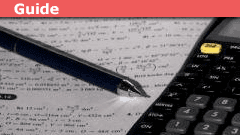
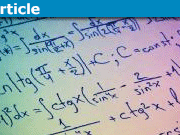
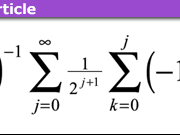
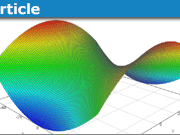

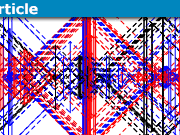
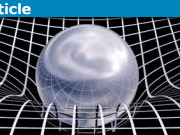
Great, exactly what i was looking for!
Maybe you should also add a section on Combinatorics, Probability and Descriptive statistics
and for problem books there is the Titu Andreescu problem books and Schaum's Outlines: Intermediate Algebra
I also recommend the book called “Fundamentals of Freshman Mathematics” by Allendoerfer/Oakley. The book is more or less on the level of Lang’s Basic Mathematics, but has a clearer exposition than Lang in my opinion. After reading that book, I do not recall a need for extra books on the high-school mathematics.
“Thanks Micro. Perhaps you could mention online resources as well like Khan’s Academy and MathIsPower4u.com”
Doing an review Insight on the best online resources would be great too!
Thanks Micro. Perhaps you could mention online resources as well like Khan’s Academy and MathIsPower4u.com
Quite valuable info. Really helpful!